Mastering the Art of Mold Making for Motorcycle Fairings
September 21, 2025 | by summitfairings
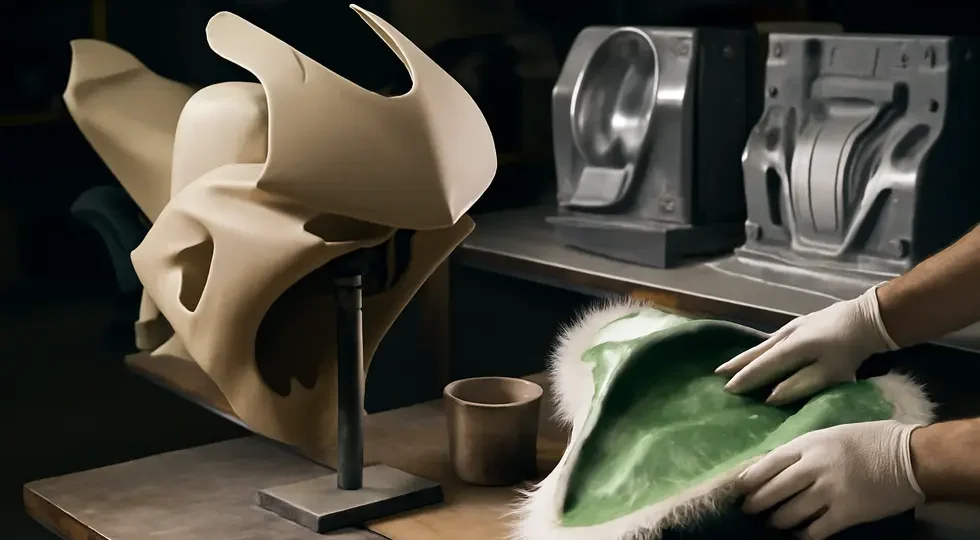
Introduction
Crafting molds for motorcycle fairings is a critical element for businesses aiming to deliver high-quality, custom, or mass-produced parts. Understanding how to create molds effectively bridges the gap between innovative design and efficient manufacturing. This process begins with preparing a precise master model and extends through detailed fabrication techniques using materials like fiberglass, silicone, and advanced industrial methods. Business owners must also weigh economic and technical considerations between DIY strategies and industrial processes to align production with market demands. Lastly, the strategic applications of these mold-making techniques influence the landscape of customization and volume production, enabling brands to meet diverse customer needs. Each chapter in this guide builds essential knowledge, empowering business owners to optimize their approach to motorcycle fairing mold making.
Tables of Contents
Chapter 1: Designing and Preparing the Master Model for How to Make a Mold for Motorcycle Fairings
- Master Model Creation: Precision Design and Material Choices for Durable Motorcycle Fairing Molds
- Ensuring Precision and Surface Excellence: Technical Control in Master Model Preparation for Motorcycle Fairing Molds
Chapter 2: Step-by-Step Mold Fabrication Process for How to Make a Mold for Motorcycle Fairings
- Strategic Design and Material Choices Crucial to Mold Fabrication Success
- Precision Crafting and Longevity: Machining, Finishing, and Maintaining Motorcycle Fairing Molds
Chapter 3: Materials and Techniques in How to Make a Mold for Motorcycle Fairings: Fiberglass, Silicone, and Advanced Methods
- Mastering Fiberglass and Silicone: Crafting Durable and Detailed Molds for Motorcycle Fairings
- Mastering Advanced Composite Molding Techniques for Durable and Precise Motorcycle Fairing Molds
Chapter 4: Industrial vs DIY Approaches in How to Make a Mold for Motorcycle Fairings: Economic and Technical Perspectives
- Balancing Costs and Production Scale: Economic Insights into Industrial and DIY Molding Methods for Motorcycle Fairings
- Balancing Quality and Complexity: Technical Insights into Industrial and DIY Mold Making for Motorcycle Fairings
Chapter 5: Applications and Impact of How to Make a Mold for Motorcycle Fairings in Customization and Mass Production
- Harnessing Technological Advances and Economic Benefits in Motorcycle Fairing Mold Making
- Shaping the Future: Societal and Industrial Influence of Motorcycle Fairing Mold-Making
Chapter 1: Designing and Preparing the Master Model for How to Make a Mold for Motorcycle Fairings
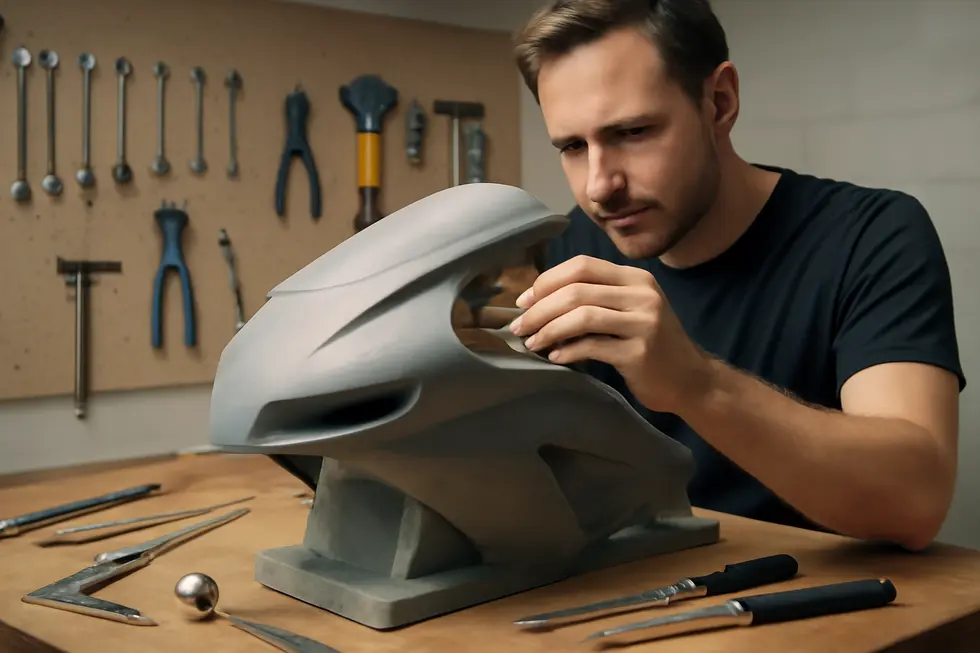
1. Master Model Creation: Precision Design and Material Choices for Durable Motorcycle Fairing Molds
Creating an effective master model is the cornerstone of making high-quality molds for motorcycle fairings. The design begins with capturing exact measurements or employing 3D scanning techniques to digitally reproduce the motorcycle’s contours and structural points. Developing detailed CAD models ensures the fairing’s aerodynamic integrity and perfect fit during production. Selecting suitable materials for the master model involves balancing ease of shaping, dimensional stability, and surface fidelity. High-density foam stands out in prototyping for its simplicity in carving and sanding, while wood offers an affordable alternative for less complex shapes. For long-term use and industrial precision, aluminum is the preferred choice, benefiting from its durability and thermal resilience.
Fabricating the master requires either advanced CNC machining or skilled hand sculpting. Aluminum masters typically undergo five-axis CNC milling to achieve smooth, intricate curves with minimal surface imperfections. In contrast, foam or wood models are manually shaped and meticulously sanded to eliminate flaws that could transfer to the mold. After shaping, a crucial step is sealing the surface with epoxy resin or compatible primers. This not only protects the model but also creates a glossy finish that directly influences the mold’s detail and ease of release.
The master’s resilience is vital, especially where molds will be produced repeatedly or subjected to heat, such as vacuum forming processes. Aluminum’s superior heat dissipation prevents deformation, ensuring dimensional accuracy throughout production cycles. Conversely, foam masters are better suited for experimental runs or custom one-off projects due to their lower cost and flexibility.
Maintenance of the master model is equally important. Keeping the surface clean and inspecting for damage prevents defects that could propagate during mold making. Regular upkeep significantly extends the model’s lifespan and consistent output quality. This thoughtful combination of precision design, material selection, fabrication, and maintenance forms the foundation for successful mold creation that yields durable, well-fitting motorcycle fairings.
For more insights on motorcycle fairings and related crafting techniques, visit the explore the best motorcycle fairings at Summit Fairings.
Further technical specifications and examples can be found at the Alibaba Motorcycle Fairing Mold Showroom.
2. Ensuring Precision and Surface Excellence: Technical Control in Master Model Preparation for Motorcycle Fairing Molds
The foundation of successful mold-making for motorcycle fairings lies in meticulously designing and preparing the master model with uncompromising technical precision and quality control. The master model must embody exact dimensional accuracy, matching the intended motorcycle’s specifications flawlessly. This precision ensures that the finished fairing aligns perfectly in fit and function, preventing any misalignments or performance issues. Achieving this level of accuracy requires carefully calibrated measurements and regular verification throughout the model’s creation.
Material choice profoundly influences the master model’s stability and durability during mold-making. Metals like aluminum and steel are favored for their toughness and thermal stability, helping to maintain shape integrity during repeated use. In some cases, advanced composites such as carbon fiber prepregs offer a compelling balance of lightweight strength and dimensional rigidity, although these demand skilled craftsmanship. The selection hinges on balancing resilience with the ability to preserve fine surface detail.
Surface quality is equally critical. Any imperfection—scratches, pits, or rough areas—on the master model’s surface will directly imprint onto the mold and, subsequently, every fairing produced. Thus, obtaining a flawless, smooth finish is essential. This often entails polishing and sealing processes to create a defect-free surface capable of reproducing clean, attractive fairings. Combined with a meticulous application of mold release agents, these steps safeguard both the model’s surface and the eventual mold’s fidelity.
Consistent quality control routines underpin the entire preparation process. Thorough inspections for cracks or chips prevent underlying defects from escalating. Maintaining a pristine master surface prevents contamination, which can cause mold flaws or weak spots. Frequent dimensional checks throughout the workflow assure the model does not warp or deviate from specifications. Additionally, routine maintenance—cleaning and lubrication of mold-supporting equipment—sustains consistent production quality and prolongs the master’s lifespan.
Integrating these detailed technical and quality control considerations ensures that the master model serves as a reliable foundation for producing durable, precise molds. This careful preparation ultimately enables the fabrication of high-quality motorcycle fairings that meet both aesthetic and functional expectations.
For a deeper understanding of mold options and materials, explore detailed industry insights at Alibaba’s motorcycle fairing mold resource.
Chapter 2: Step-by-Step Mold Fabrication Process for How to Make a Mold for Motorcycle Fairings
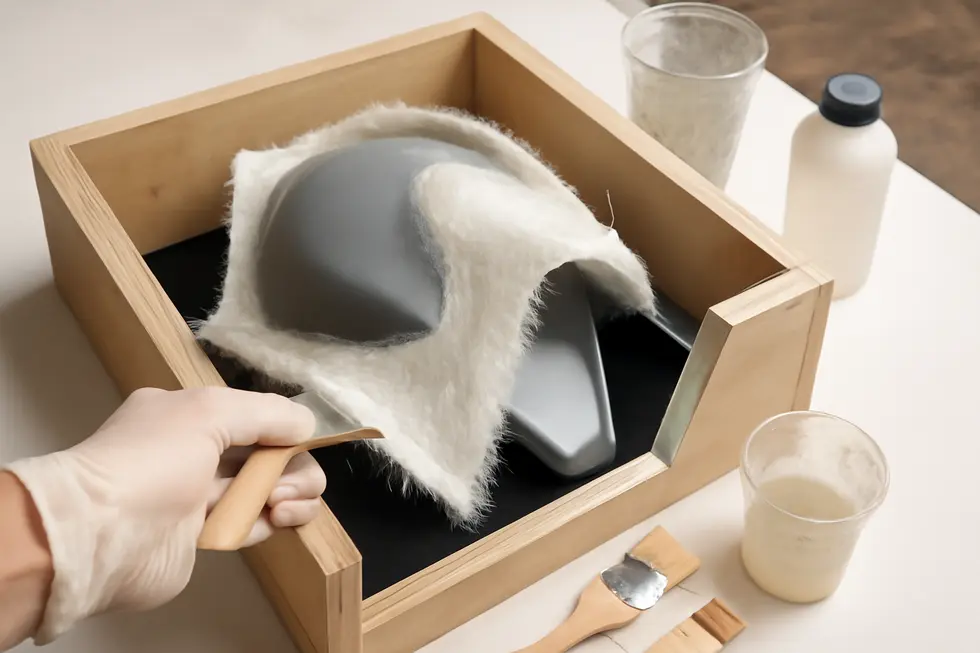
1. Strategic Design and Material Choices Crucial to Mold Fabrication Success
Successful mold fabrication for motorcycle fairings hinges on an integrated approach to design precision and material selection tailored to production demands. The first priority in this process is accurate mold design, which involves creating a detailed 3D model that faithfully replicates the motorcycle fairing’s dimensions and aesthetic features. Utilizing CAD software ensures the mold contours align perfectly with parts such as the tank, side panels, or windscreen, establishing an essential foundation for a flawless final product. This precision is vital because even minute deviations can compromise fit, leading to alignment issues or structural weaknesses in the finished fairings.
Material choice for the mold directly impacts its durability, functionality, and suitability for the intended manufacturing method. For industrial-scale production, steel molds are preferred for their robust heat resistance and exceptional longevity, making them ideal for repeated injection molding cycles. Though heavier and costlier than alternatives, steel offers unmatched endurance. Aluminum presents a compelling option for prototyping or low-volume runs; its lighter weight facilitates easier handling and reduces machining costs, though it is less resistant to wear over time. Occasionally, composite materials are employed to meet specialized thermal or weight requirements, blending properties for niche applications.
The mold fabrication workflow proceeds with CNC machining, which precisely carves the mold cavity from the selected material based on the digital design. This step demands careful calibration to maintain tolerances and surface smoothness critical for part accuracy and finish quality. Post-machining surface treatments, including polishing or applying coatings, enhance the mold’s release properties and the aesthetic quality of produced fairings, minimizing imperfections transferred from mold to product.
Multi-part mold assemblies may be necessary for complex fairing geometries, requiring thoughtful design to ensure seamless parting lines and ease of demolding. Prior to large-scale use, trial runs help verify dimensional fidelity and surface detail reproduction, allowing for adjustments before committing to full production.
To extend mold longevity, maintenance is indispensable. Cleaning after each use removes residue that could degrade the mold surface, while routine inspections identify wear or damage early. Applying appropriate lubricants reduces friction on moving components, safeguarding precision over time.
This meticulous balance of precise design and informed material selection is fundamental to producing high-quality, durable molds capable of supporting consistent motorcycle fairing manufacturing. For further reading on mold specifications and maintenance practices, see Alibaba’s custom motorcycle fairing mold insights. To explore more about customization and fairing options, visit the Summit Fairings blog.
2. Precision Crafting and Longevity: Machining, Finishing, and Maintaining Motorcycle Fairing Molds
The final stages of the mold fabrication process are integral to achieving a motorcycle fairing mold that combines precision, durability, and superior surface quality. Machining lays the foundation by shaping the mold cavity to match every contour of the original fairing design. This is typically accomplished through advanced techniques such as high-speed CNC milling, which carves intricate three-dimensional forms with remarkable accuracy. For hardened steel molds, Electrical Discharge Machining (EDM) offers the ability to reproduce detailed features without compromising material strength. Together, these methods ensure the mold’s geometry faithfully replicates the desired fairing, setting the stage for consistent part quality.
Following machining, the mold undergoes meticulous finishing to refine its surface and functionality. Polishing is essential to create a smooth, defect-free surface that not only enhances the visual quality of the molded fairings but also facilitates easier demolding. This step involves removing any residual burrs and imperfections while optionally applying surface textures where needed to achieve specific finishes or grip characteristics. The finishing process also includes thorough cleaning and inspection, verifying that dimensional tolerances and surface integrity meet stringent standards required for high-quality production.
Once the mold is fully fabricated, ongoing maintenance becomes vital to preserve its precision and extend its operational lifespan. Regular cleaning prevents buildup of residues that could impair mold performance or damage delicate surface details. Routine inspections help detect early signs of wear or defects, allowing timely repairs or adjustments to maintain consistent output quality. Choosing durable mold steels and employing careful machining strategies from the outset also contribute to easier upkeep, reducing downtime and costs.
By integrating precise machining, expert finishing, and proactive maintenance, mold makers ensure their motorcycle fairing molds remain robust tools capable of producing flawless parts over multiple production cycles. This comprehensive approach balances artistry and engineering, providing the framework required for reliable, long-term molding success.
For further insights into the technical aspects of mold machining and finishing, the die/mold machining overview at Modern Machine Shop offers valuable guidance and best practices. Additionally, those interested in maintenance strategies can explore detailed recommendations available from Sungem Mold Manufacturing.
Explore more about crafting high-quality fairings and related fabrication steps at Explore the Best Motorcycle Fairings at Summit Fairings.
Chapter 3: Materials and Techniques in How to Make a Mold for Motorcycle Fairings: Fiberglass, Silicone, and Advanced Methods
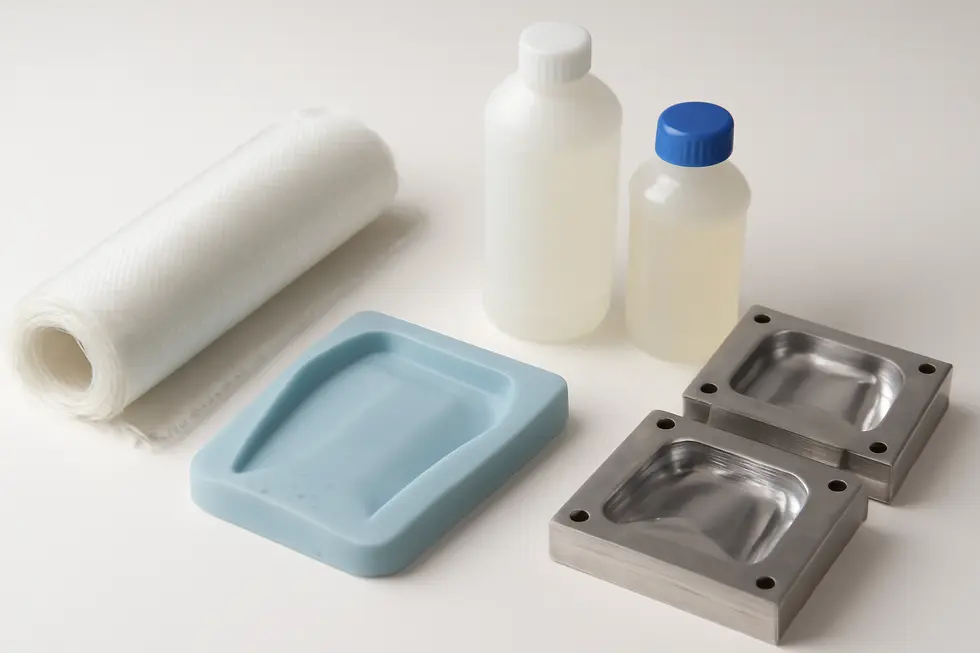
1. Mastering Fiberglass and Silicone: Crafting Durable and Detailed Molds for Motorcycle Fairings
Fiberglass and silicone stand as the foundational materials in creating molds for motorcycle fairings, each contributing unique strengths to the fabrication process. Fiberglass is widely favored for building the rigid outer shell or mother mold due to its remarkable strength and lightweight characteristics. Constructed from woven glass fibers bonded with resin—often polyester or epoxy—the fiberglass composite forms a sturdy structure that maintains mold integrity during multiple casting cycles.
The process begins by thoroughly cleaning the original fairing or plug and applying a mold release agent to prevent adhesion. Layers of fiberglass cloth saturated with resin are meticulously laid over the plug, with adequate curing time between each layer to ensure solidification. This layered approach continues until the shell achieves sufficient thickness, providing the necessary durability and rigidity to withstand the stresses of repeated use. The finished fiberglass shell is essential for preserving the mold’s shape and contributes substantially to its longevity.
Conversely, silicone rubber serves as the flexible inner mold layer renowned for capturing intricate surface textures with precision. Its elasticity allows it to stretch and peel away from cast parts without tearing or distorting details. Platinum-cure silicones are often used because of their dimensional stability, chemical resistance, and durability. Creating a silicone mold involves carefully applying liquid silicone by pouring or brushing it over the plug. To avoid imperfections like air bubbles, techniques such as vacuum degassing are employed before pouring. A sufficient silicone thickness, usually several millimeters, ensures flexible yet robust mold walls.
An advanced and highly effective approach combines these two materials, resulting in a two-part mold system: the silicone layer captures every fine detail of the fairing’s surface, while the fiberglass mother mold offers the strength and support necessary during casting. This hybrid technique balances the demand for precision with the need for a practical, long-lasting mold framework.
Release agents designed specifically for composites play a pivotal role in simplifying demolding while protecting both the master and the mold from damage. For highly demanding applications, some fabricators utilize high-performance prepregs—preimpregnated fibers with resin—that offer improved heat resistance and mold life.
Through this synergy of materials and techniques, custom motorcycle enthusiasts and small-scale fabricators can produce molds that combine detailed fidelity with durability. For detailed guidance on fairing options and fabrication, exploring trusted resources such as the explore-summit-fairings blog can provide valuable insights.
These methods reflect a balance between craftsmanship, materials science, and practical manufacturing, providing a foundation for the creation of high-quality molds suited to the needs of custom motorcycle fairings production.
2. Mastering Advanced Composite Molding Techniques for Durable and Precise Motorcycle Fairing Molds
Creating molds for motorcycle fairings using advanced composite methods requires an integrated understanding of material properties and fabrication techniques. The core materials typically involve fiberglass, silicone rubber, and specialized resin systems such as epoxy or polyester, each bringing distinct advantages depending on the desired mold characteristics.
Fiberglass remains a foundational choice due to its strength and durability. The process begins by preparing a master fairing model, carefully coated with a release agent to prevent sticking. Multiple layers of fiberglass cloth or mat are then saturated with catalyzed resin—most often polyester for cost efficiency or epoxy for superior strength and chemical resistance—and applied over the master until the mold achieves sufficient thickness. Epoxy resins stand out for their ability to capture fine surface details and resist heat, making them ideal when a high-performance mold is critical.
Silicone molds complement fiberglass by offering flexibility, essential for complex or highly detailed shapes that require easy demolding. Their elastic nature enables the casting of intricate fairing parts without damage. This flexibility is particularly beneficial when working with hand-laid composite materials such as carbon fiber or fiberglass reinforced plastics, commonly used in high-end or custom fairings and protective gear.
Advanced composite methods incorporate carbon fiber reinforcements within resin matrices to achieve molds and parts with exceptional strength-to-weight ratios. Carbon fiber demands meticulous layering and curing protocols to maintain uniformity and surface quality. Additionally, blending milled glass fibers into resin matrices further enhances mechanical properties like tensile strength and surface finish, producing molds capable of withstanding repeated use without deforming.
Throughout the process, precise application of mold release agents, uniform resin saturation, and thoughtful selection of resin type impact the final mold’s longevity and fidelity. Tools such as heat guns facilitate resin curing, while trim tools and alignment checks ensure molds fit and function perfectly for producing flawless fairings.
This advanced composite approach merges traditional fiberglass layup with modern innovations in silicone flexibility and carbon fiber strength. The result is molds that strike an optimal balance between durability, detail accuracy, and ease of use, catering well to both small-batch fabrication and higher-quality custom projects.
For further insights into the nuances of fiberglass mold creation and materials, see practical guides available through industry resources like Alibaba’s fiberglass molds overview (source). Additionally, enthusiasts can explore the ultimate source for affordable motorcycle fairings to understand how mold quality influences final product appearance and performance.
Chapter 4: Industrial vs DIY Approaches in How to Make a Mold for Motorcycle Fairings: Economic and Technical Perspectives
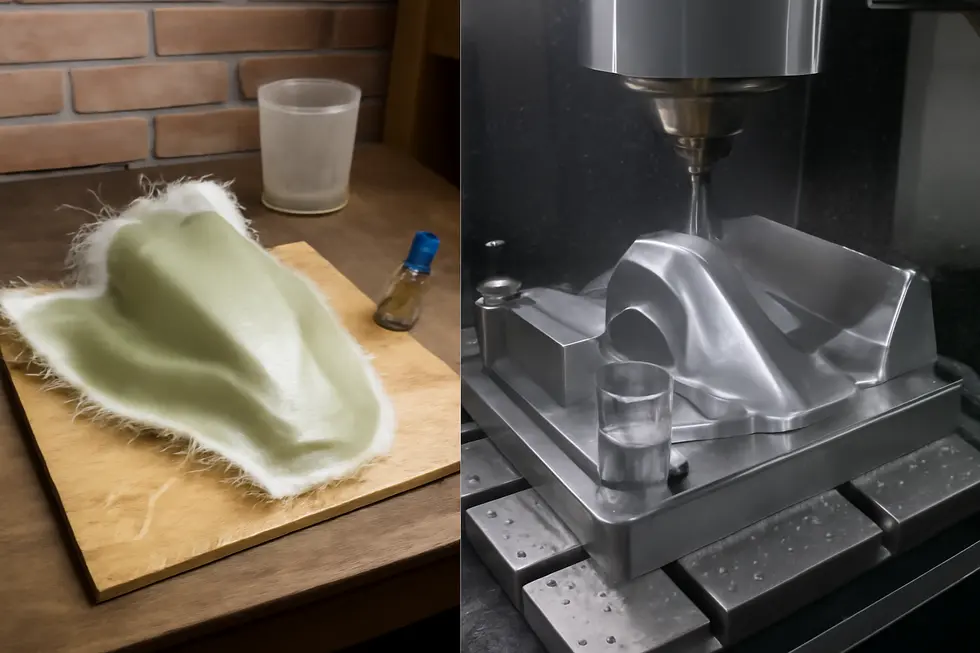
1. Balancing Costs and Production Scale: Economic Insights into Industrial and DIY Molding Methods for Motorcycle Fairings
When deciding between industrial and DIY methods for making molds for motorcycle fairings, understanding the economic dynamics of each approach is crucial. The heart of the matter lies in evaluating costs, scalability, and achievable production volumes, each heavily influenced by the chosen molding technique.
DIY mold making typically appeals to individuals or small workshops due to its relatively low initial costs. Materials like fiberglass and silicone, alongside basic tools, keep the upfront investment manageable. This approach shines particularly in producing custom or prototype parts, where flexibility and iterative adjustments outweigh sheer volume. However, this cost-effectiveness can be deceptive, as DIY processes involve manual labor and may result in variability or defects that raise per-part expenses over time. The lack of automation means throughput is limited, and the molds—usually less durable than industrial counterparts—may require frequent replacement or repair.
On the other hand, industrial mold making demands substantial capital, notably for injection molding machines and high-precision tooling such as steel molds. These significant upfront expenses are justified when scaled over large production runs. Industrial methods benefit from economies of scale, driving down the cost per fairing as quantity increases. Automation also translates to consistent quality and rapid cycle times, essential for meeting the demands of mass manufacturing. Durable steel molds support thousands of production cycles without significant wear, further enhancing cost efficiency over time.
Scalability is another defining feature separating these approaches. DIY molds excel in low-volume scenarios where customization is key, allowing fairing designs to evolve quickly with minimal setup. Conversely, industrial techniques provide the infrastructure to ramp production quickly and maintain uniformity, crucial for commercial supply chains.
Material durability and finish quality also influence economic considerations. Industrial molds yield highly detailed, uniform finishes and enable use of varied plastics, enhancing product appeal and market value. DIY molds, while more accessible, often sacrifice some surface precision and longevity, affecting the final part’s aesthetics and lifespan.
Ultimately, the economic balance comes down to production goals: DIY molding offers a cost-effective path for bespoke or limited-run motorcycle fairings, while industrial molding is indispensable for volume-driven, consistent manufacturing. For those interested in exploring cost-effective options in motorcycle fairings procurement and customization, resources such as the affordable motorcycle fairings collection provide valuable insights.
More details on injection molding efficiency and cost benefits can be found through industrial resources covering machinery and materials for large-scale fairing production.
2. Balancing Quality and Complexity: Technical Insights into Industrial and DIY Mold Making for Motorcycle Fairings
Creating molds for motorcycle fairings involves a nuanced technical balance between materials, quality, and manufacturing complexity, which distinctly separates industrial methods from DIY approaches. Industrial mold making harnesses cutting-edge materials like carbon fiber prepregs combined with specialized resins, producing molds that not only withstand rigorous manufacturing but also maintain exceptional strength and precision over countless production cycles. This approach relies heavily on advanced technologies such as CAD and CAM for intricate design and precise fabrication, along with autoclave curing processes—subjecting molds to high heat and pressure—to achieve immaculate surface finishes and superior dimensional accuracy. The controlled manufacturing environments and stringent process parameters ensure repeatability necessary for high-volume production. However, this sophistication demands specialized knowledge and significant investment in both machinery and materials, reflecting a pronounced manufacturing complexity.
In contrast, the DIY approach is grounded in accessibility and adaptability, typically utilizing materials like silicone, fiberglass, and more common polyester or epoxy resins. These materials allow hobbyists and small fabricators to manually craft molds without elaborate equipment or strict environmental control. While this method offers affordability and the freedom to experiment with custom or prototype fairings, it often yields results with variable durability and surface quality, largely influenced by the maker’s skill and attention to detail. The simpler, hands-on process caters well to low-volume or bespoke projects but cannot match the dimensional precision or structural resilience of industrial molds.
The technical divergence between these methods centers on the tradeoffs among mold longevity, detail fidelity, and ease of demolding. Industrial molds excel in producing consistent, high-quality parts at scale but come with greater complexity and upfront costs. Conversely, DIY molds prioritize flexibility and cost-effectiveness, which suits personalized or small-batch fabrication but imposes limitations on mold robustness and finish quality. Selecting between these approaches ultimately depends on production goals, budget, and available expertise.
For readers seeking deeper understanding of how these approaches shape motorcycle fairing manufacturing, the interactive and detailed resources at Summit Fairings blog provide valuable insights.
Reference on industrial mold technologies and materials.
Chapter 5: Applications and Impact of How to Make a Mold for Motorcycle Fairings in Customization and Mass Production

1. Harnessing Technological Advances and Economic Benefits in Motorcycle Fairing Mold Making
Mold making for motorcycle fairings stands at the crossroads of technology and economy, shaping how customization and mass production evolve within the industry. Precision fabrication methods using durable materials such as steel and aluminum enable the creation of molds that produce consistent, high-quality fairings tailored precisely to individual motorcycle models. This accuracy ensures both aerodynamic efficiency and aesthetic appeal, essential for performance and market desirability. Alongside traditional materials, innovations in composites like fiberglass and carbon fiber, as well as polymers such as Polyoxymethylene (POM), have expanded capabilities. These materials enhance the lightweight strength and durability of fairings while allowing flexible manufacturing options, particularly valuable for short production runs or specialized tooling without the heavy investment of dedicated molds. Beyond materials, the integration of emerging technologies—like sensor arrays, data analytics, and machine learning—into mold manufacturing enhances process control. These advances minimize errors, reduce waste, and shorten production cycles, benefiting both custom shops and large-scale operations by improving efficiency and product consistency. Economically, molds empower small workshops and custom fabricators to meet niche demands, enabling unique, limited-run fairings that differentiate brands and satisfy enthusiasts’ desires for personalization. Though initial mold design and upkeep require investment, the ability to innovate creatively and quickly adapt designs adds substantial market value. For mass production, high-quality, durable molds support rapid, repeatable manufacturing that lowers per-unit costs and maintains uniform quality standards. This scalability is vital for profitability and competitive pricing, further driven by material and process innovations that reduce weight and cost. Using engineered plastics like POM also cuts down maintenance and lifecycle expenses, enhancing economic advantages. Sustainability is becoming an integral part of this landscape as well. New techniques for recycling fiber-reinforced plastics from molds and fairings are emerging, offering environmental benefits and cost savings. These advances, proven in automotive and aerospace industries, are poised to influence motorcycle manufacturing by encouraging material reuse and reducing waste. Collectively, these technological strides and economic impacts have transformed mold making into a strategic asset that bridges custom craftsmanship and industrial production. This synergy fosters innovation, efficiency, and sustainability, fueling growth across the motorcycle fairing market. For a deeper exploration of diverse motorcycle fairing options and market trends, exploring affordable motorcycle fairings at Summit Fairings provides valuable insights. Detailed polymer usage and composite manufacturing innovations are further examined in industry reports on composites, highlighting the evolving landscape of mold material technology.
2. Shaping the Future: Societal and Industrial Influence of Motorcycle Fairing Mold-Making
The art and science of making molds for motorcycle fairings exert profound influence across both societal and industrial spheres. Industrially, mold fabrication transforms raw design concepts into precise, durable components that meet the rigorous demands of various motorcycle models and rider preferences. The use of materials such as aluminum, steel, fiberglass, and silicone enables manufacturers to produce molds that guarantee repeatable quality, essential for mass production yet flexible enough for limited custom runs. This balance between precision and adaptability supports not only large-scale manufacturers but also smaller custom shops striving to deliver personalized aesthetics and improved performance.
The evolution of mold materials and techniques plays a pivotal role in advancing manufacturing efficiency. High-performance composites and polymers like Polyoxymethylene (POM) bring durability and lightweight properties to fairing molds, streamlining both prototyping and short production cycles. These advances allow rapid innovation and responsiveness in design adjustments without the prohibitive costs of traditional tooling. Moreover, diligent mold maintenance, including careful cleaning and lubrication, enhances mold longevity, reducing operational costs and downtime in diverse production environments.
On a societal level, mold-making empowers motorcycle enthusiasts by broadening options for personalization, fostering a culture that values individual expression and tailored performance. This accessibility to customized fairings invigorates communities linked by passion for motorcycling and design innovation. Economically, the fairing mold and manufacturing sector supports skilled jobs in design, fabrication, and maintenance, contributing significantly to both local economies and global supply chains.
Sustainability also emerges as a core consideration, with growing integration of bio-based composites and environmentally conscious materials reducing the ecological impact of motorcycle production. These shifts reflect an industry-wide commitment to greener practices, resonating with increasingly eco-aware consumers while leveraging technological breakthroughs initially popularized in aerospace and automotive industries.
The ripple effects of mold-making innovations extend beyond motorcycling, fostering technology transfer across sectors and inspiring continuous improvement in materials science and manufacturing methods. This dynamic interplay of craftsmanship and technology ensures that both custom and mass-produced motorcycle fairings evolve in harmony with market demands and environmental responsibility.
For riders and fabricators seeking insight into the expansive range of motorcycle fairings made possible through such advanced mold-making processes, exploring a trusted source for diverse styles and affordable options can illuminate the practical benefits of these industrial and societal advancements. Learn more about these possibilities by visiting Explore the Best Motorcycle Fairings at Summit Fairings.
Further details on modern materials that support this integration can be found in research on polyoxymethylene (POM) properties and applications.
Final thoughts
Mastering mold making for motorcycle fairings offers business owners a pivotal advantage in both the custom parts and mass production arenas. From the critical foundation of designing an accurate master model, through the meticulous fiberglass or silicone mold fabrication process, to selecting the right materials and methods, every step influences product quality and operational efficiency. The choice between DIY and industrial approaches hinges on balancing upfront investments against volume demands and detail fidelity — a decision essential for aligning production scales with market opportunities. Ultimately, these mold-making capabilities empower manufacturers to cater to diverse customer preferences, stimulate innovation, and solidify competitive positioning in the motorcycle parts industry. Embracing these insights enables businesses to deliver stylish, durable, and affordable fairings that resonate with riders globally.
Ready to elevate your ride? Summit Fairings delivers premium, custom-fit fairings that blend style and durability. Whether you’re chasing speed or turning heads, we’ve got your bike covered. Don’t wait—transform your machine today. Click, customize, and ride with confidence. Your perfect fairing is just a few clicks away. Act now!
About us
undefined
RELATED POSTS
View all



